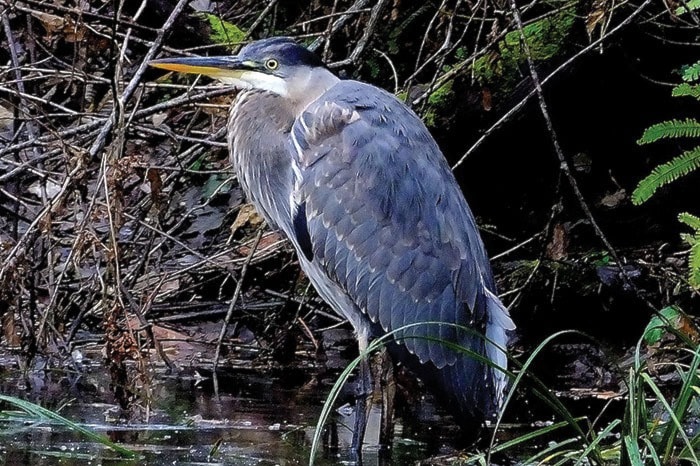Pop quiz: Which large wetland creature has blue facial skin, green legs, and a deep croaking voice?
Answer: The great blue heron (Ardea herodias).
When the giant bird lumbers into its wondrously-powerful flight, it’s an obvious comparison to ancient airborne pterosaurs. This largest and heaviest of North America’s heron family belongs to a bird order thought to extend back 54 million years, as British fossils indicate.
Throughout winter, where waterways remain ice-free, it’s possible to see this stunning but skittish creature in its natural habitat. When approached, the famously shy and suspicious heron quickly takes flight, leaving the observer with barely a glimpse.
Along coastal British Columbia shorelines, the stately great blue is a common sight, often standing motionless for extended periods of time, waiting for prey.
These formidable, carnivorous predators possess a conspicuous dagger-shaped bill (16 cm; 6 in.), the perfect implement for spearing fish – a favourite meal – frogs, birds or mice with rattlesnake intensity. Theirs is a diet of opportunity and substantial volume.
John James Audubon observed that “in favourable circumstances, one of them could devour several hundred small fish in a day.”
At the turn of the century, herons (and egrets) were under attack due to the millinery trade’s extraordinary demand for their splendid feathers.
For sheer size and ancient lineage alone, these long-legged beauties are among the most interesting of wetland birds. Canada’s Committee on the Status of Endangered Wildlife has assessed the coastal "Pacific" subspecies of great blue heron as a species of special concern.
E-mail Christine at: wildernesswest@shaw.ca
